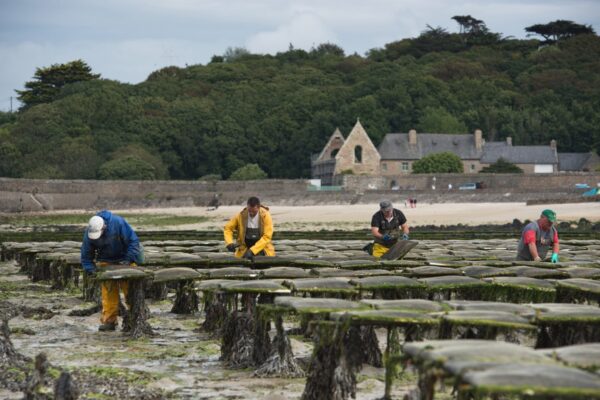A new paper led by Plymouth Marine Laboratories (PML) investigated the expansion of the non-native Pacific oysters in a hotter Europe, considering the varying possible climate scenarios that we may face in the future.
The study was led by PML researcher Dr Robert Wilson, who said:
“Our study addressed a simple question: What matters the most when we are trying to predict how climate change will affect marine species? We addressed this by projecting the impacts of climate change on Pacific oysters in Europe using multiple climate scenarios and multiple climate models.”
Credit: Nicolas Job / Ocean Image Bank
Valuable yet non-native
Since the mid-1960s, the introduction of Pacific oysters from Japan to Europe has led to a significant expansion of aquaculture, making it the European Union’s second most economically valuable species. However, with climate change driving warmer waters, the geographical distribution of Pacific oyster production is expected to shift, potentially benefiting aquaculture economically but posing complex challenges for ecosystems and native species due to increased competition from this invasive species. Until the 1990s, it was believed that cold waters in regions north of France would prevent Pacific oysters from spawning and becoming invasive. However, recent observations show their spread to areas like Scandinavia, the Dutch coast, the Wadden Sea, and the southern English coast, suggesting factors beyond accidental releases or ballast water may be at play.
The new study led by Dr R. Wilson, along with Dr Susan Kay and Dr Stefano Ciavatta of Mercator Ocean International, analysed the potential expansion of the non-native Pacific oyster in Europe by using an ensemble modelling approach. Ensemble modelling is a process where a diverse group of models are used to project an outcome. The underlying philosophy is that the level of agreement between models can tell us something about how likely future outcomes are, and also provide a clear indication of the plausible range of possible futures.
Internal variability
Dr R. Wilson said “We found that the level of future emissions is critical and that climate change impacts in the high emissions SSP 8.5 scenario [see the ‘Five futures’ emissions and climate scenario decoder here], could be more than twice as high as in the low emissions scenario SSP1 2.6 by the end of the 21st Century.”
“Importantly, the ensemble showed that the near-term changes in Pacific oysters are highly uncertain due to internal (i.e. natural) variability, which of a similar magnitute to climate model uncertainty on a 20-year timescale.”
Read the PML press release here
Access the open-access paper here
